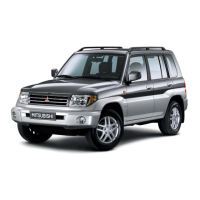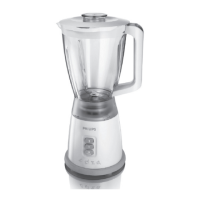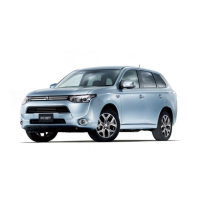Chapter 1 Tune-up and routine maintenance
l-75
10.6a Use needle-nose pliers to pull the two support rods out
of the blade element
10.6 Place the plastic clip in position, then insert the blade
onto the wiper arm
11 Underhood hose check and replacement
General
Caution:
Replacement of air conditioning hoses must be left to a dealer
service department orairconditioning shop that has the equipment to de-
pressurize the system safely. Never remove air conditioning components
or hoses until the system has been depressurized.
1 High temperatures in the engine compartment can cause the deterio-
ration of the rubber and plastic hoses used for engine, accessory and
emission systems operation. Periodic inspection should be made for
cracks, loose clamps, material hardening and leaks. Information specific
to the cooling system hoses can be found in Section 9.
2 Some, but not all, hoses are secured to the fittings with clamps.
Where clamps are used, check to be sure they haven’t lost their tension,
allowing the hose to leak. If clamps aren’t used, make sure the hose has
not expanded and/or hardened where it slips over the fitting, allowing it
to leak.
Vacuum hoses
3 It’s quite common for vacuum hoses, especially those in the emis-
sions system, to be color coded or identified by colored stripes molded into
them. Various systems require hoses with different wall thicknesses, col-
lapse resistance and temperature resistance. When replacing hoses, be
sure the new ones are made of the same material.
4 Often the only effective way to check a hose is to remove it completely
from the vehicle. If more than one hose is removed, be sure to label the
hoses and fittings to ensure correct installation.
10.6b With the rods out, it’s an easy job to remove the element
from the frame
5 When checking vacuum hoses, be sure to include any plastic T-fit-
tings in the check. Inspect the fittings for cracks and the hose where it fits
over the fitting for distortion, which could cause leakage.
6 A small piece of vacuum hose (l/4-inch inside diameter) can be used
as a stethoscope to detect vacuum leaks. Hold one endbf the hose to your
ear and probe around vacuum hoses and fittings, listening forthe”hissing”
sound characteristic of a vacuum leak.
Warning:
When probing with the
vacuum hose stethoscope, be very careful not to come into contact with
moving engine components such as the drivebelts, cooling fan, etc.
Fuel hose
Warning:
There are certain precautions which must be taken when in-
specting or servicing fuel system components. Work in a well ventilated
area and don’t allow open flames (cigarettes, appliance pilot lights, etc.) or
bare light bulbs near the work area. Mop up any spills immediately and
don’tstore
fuelsoakedrags
where theycouldignite. On vehiclesequipped
with fuel injection, the fuel system is underpressure, so if any fuel lines are
to be disconnected, the pressure in the system must be relieved first (see
Chapter 4 for more information).
7 Check all rubber fuel lines for deterioration and chafing. Check care-
fully for cracks in areas where the hose bends and where it’s attached to
fittings.
8 High quality fuel line, usually identified by the word Fluroelastomer
printed on the hose, shpuld be used for fuel line replacement.
Warning:
Never, under any circumstances, use unreinforced vacuum line, clear
plastic tubing or water hose for fuel lines!
9 Spring-type clamps are commonly used on fuel lines.They often lose
their tension over a period of time, and can be “sprung” during removal.
Replace all spring-type clamps with screw clamps when,ever a hose is re-
placed.
Metal lines
10 Sections of metal line are-often used for fuel line between the fuel
pump and carburetor or fuel injection unit. Checkcarefully to be sure the
line has not been bent or crimped and look for cracks.
11 If a section of metal fuel line must be replaced, only seamless steel
tubing should be used, since copper and aluminum tubing don’t have the
strength necessary to withstand normal engine vibration.
12 Check the metal brake lines where they enter the master cylinder and
brake proportioning unit (if used) for cracks in the lines and loose fittings.
Any sign of brake fluid leakage means an immediate thorough inspection
of the brake system should be done.
12 Accelerator linkage check and lubrication
1 At the specified intervals, inspect the accelerator linkage and check it
for free movement to make sure it is not binding.
2 Lubricate the linkage with a few drops of oil.

